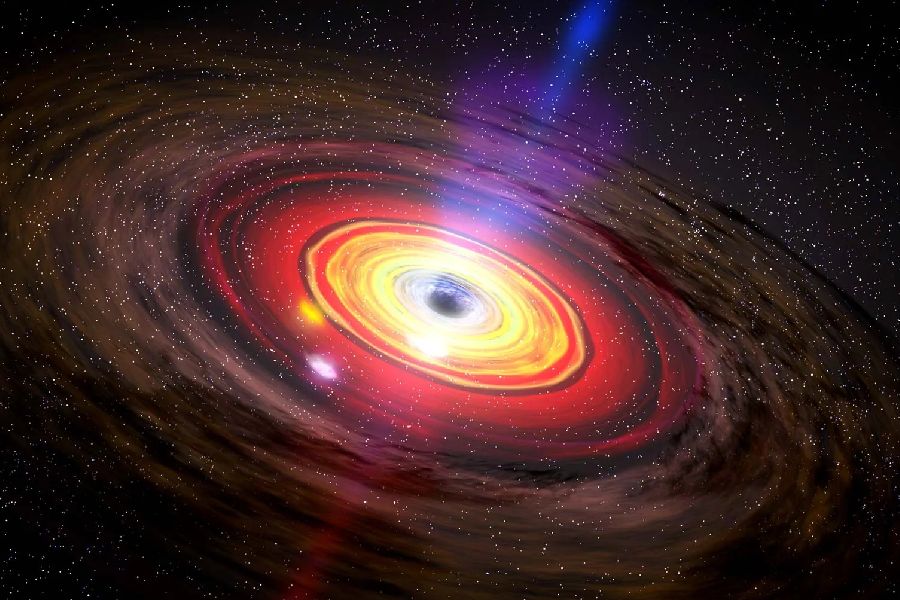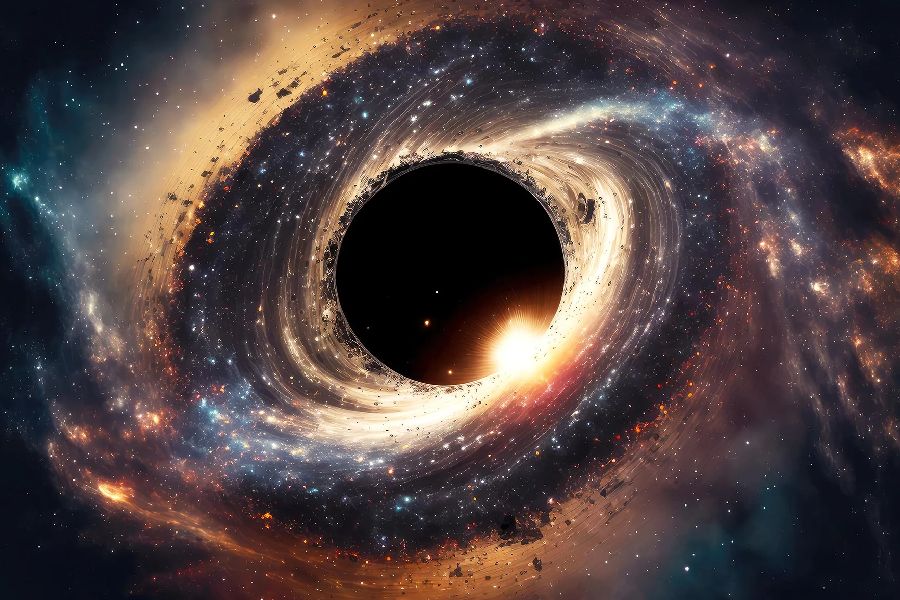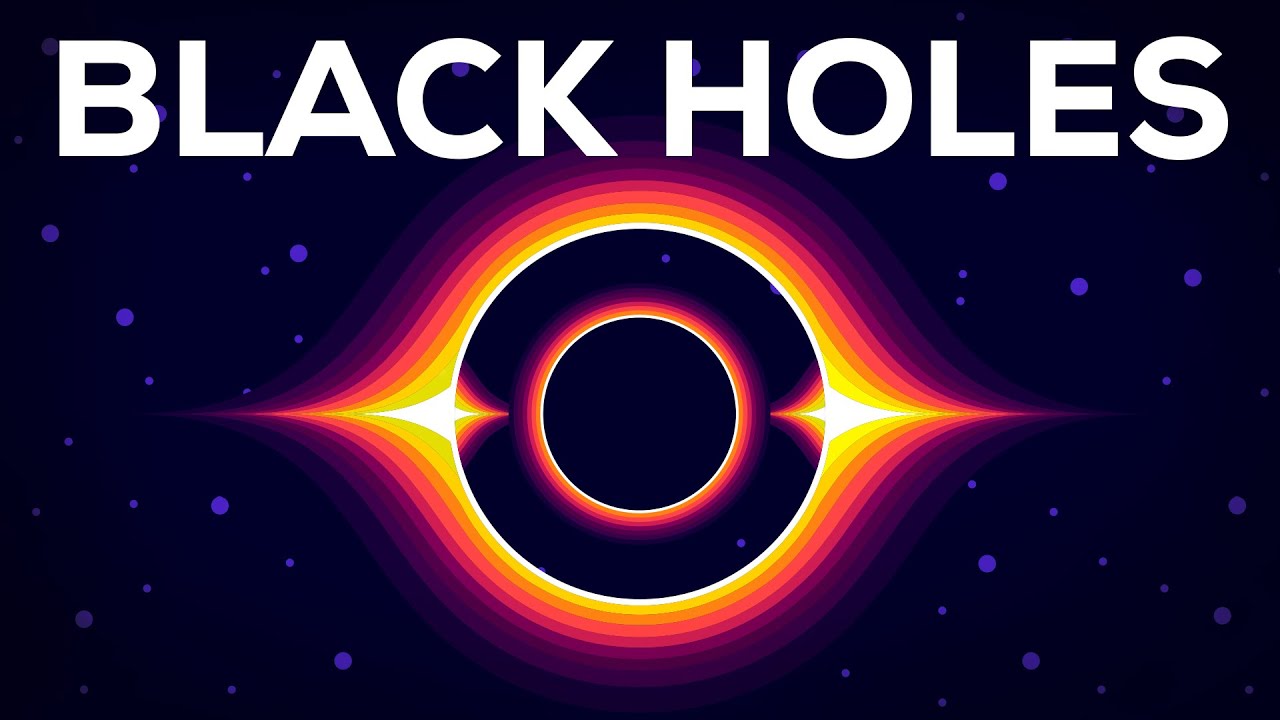In the vast cosmic tapestry, celestial enigmas known as black holes beckon scientists and stargazers to unravel their mystique. These enigmatic phenomena, shrouded in mystery, challenge our understanding of the universe’s fabric. But what are black holes?
Their existence poses questions that transcend the boundaries of known physics and spark curiosity about the very nature of space and time. Exploring the fascinating realms of these cosmic abysses involves delving into gravity and the fundamental forces that govern the cosmos.
So, let’s explore more about black holes definition, the physics of black holes, and much more!

What Are Black Holes?
Black holes are captivating cosmic entities with intense gravitational forces that not even light can escape their grasp. They gobble up everything in their path.
They come from the dramatic collapse of massive stars, leaving behind an invisible trapdoor to the unknown. Think of them as celestial detectives erasing all evidence. While they sound like cosmic troublemakers, black holes are crucial in shaping our cosmic neighborhood.
The Birth of a Black Hole
The Stellar Nursery
Our story begins in these colossal clouds of gas and dust. Within these nebulae, gravity starts playing matchmaker, pulling particles together. Over time, these particles cozy up, forming a protostar– a baby star in the cosmic crib.
Shining bright: The main sequence
The protostar enters the main sequence phase as it grows – the star’s prime time. It’s like the stellar sweet spot where nuclear fusion in the core keeps things balanced. Our star shines brightly, basking in its cosmic glory.
Going out with a bang: Supernova spectacle
Now, fast forward millions of years. If the star is a real heavyweight – we’re talking about several times the mass of our Sun – it’s destined for a spectacular exit. It’s like the star’s grand finale, unleashing an incredible burst of energy that briefly outshines an entire galaxy.
The Aftermath: Crushed Remnants
So, how are black holes formed? In the aftermath of this cosmic fireworks display, what remains is a core so dense and packed with matter. Not even light can escape its gravitational grip, marking the birth of a black hole.
Beyond the event horizon: The point of no return
As our crushed stellar remnants become a black hole, they bring along an invisible boundary called the event horizon. Once something crosses this point, it’s in the black hole’s clutches for good – the point of no return.
And there you have it, the cosmic journey from a stellar nursery to a black hole, a tale of gravity, explosions, and the ultimate cosmic makeovers. It’s the grand circle of life in the vast playground of our universe.
Defining Characteristics of Black Holes
Black holes, the enigmatic cosmic entities, possess distinct characteristics that set them apart in the vast tapestry of the universe. Let’s explore these key attributes in a way that’s accessible to everyone:
Singularity
At the heart of a black hole lies the singularity—a point where gravitational forces become infinitely strong, and space-time curvature becomes incredibly intense. The gravitational epicenter is where all the mass that formed the black hole is concentrated in an infinitely small space.
Event horizon
The event horizon is like the boundary of no return around a black hole. Once an object crosses this boundary, it’s destined to fall into the gravitational clutches of the black hole. Think of it as a point of gravitational commitment—an invisible line where the escape velocity exceeds the speed of light.
Ergosphere
The ergosphere is a region surrounding the black hole where space itself is dragged along with the rotation of the black hole.
It’s like a cosmic whirlpool where even light cannot resist the gravitational pull. Objects within the ergosphere are compelled to rotate with the black hole’s spin.

Mass and Cosmic Significance
Microscopic primordial black holes
We have microscopic primordial black holes at the lower end of the mass spectrum. These elusive entities might have formed in the early universe, packing a punch with masses less than a milligram.
Despite their diminutive size, if they exist, they could have intriguing implications for the fabric of the cosmos. They influence the distribution of matter on cosmic scales.
Stellar-mass black holes
Moving up the mass ladder, we encounter stellar-mass black holes. These are born from the remnants of massive stars that have undergone supernova explosions.
These black holes lurk in our galaxy, ranging from a few times the mass of our sun to approximately 20 times its mass. They exert influence on their stellar companions through gravitational interactions. Also, they can act as cosmic sculptors, shaping the evolution of star clusters and nebulae.
Intermediate-mass black holes
In the intermediate range, we find black holes with masses tens to thousands of times that of our sun. Their origins are still a topic of exploration, but they might form through mergers of smaller black holes or the collapse of massive star clusters.
These mid-sized black holes play a pivotal role in galactic dynamics. They potentially influence the orbits of stars and the evolution of their host galaxies.
Supermassive black holes at galactic centers
At the cosmic apex, we encounter supermassive black holes residing at the centers of most galaxies, including our own Milky Way. These behemoths tip the scales at millions or even billions of times the Sun’s mass. Their gravitational influence extends far beyond their immediate surroundings, shaping the fate of entire galaxies.
So, the interplay between these colossal black holes and their galactic environments is a cosmic dance spanning epochs. This dynamic interaction influences the formation and evolution of galaxies on a grand scale.
Impact on stars, nebulae, and galactic evolution
Black holes wield gravitational influence, bending the trajectories of nearby stars and, in some cases, tearing them apart in dramatic tidal forces. They can also play a crucial role in the life cycles of galaxies, affecting the distribution of matter and regulating star formation.
The intense gravitational fields around black holes can influence the fate of gas clouds and nebulae by consuming them or triggering the birth of new stars. Black holes, across their various mass ranges, are cosmic architects, influencing the structure and destiny of the universe.
These enigmatic objects shape the cosmic landscape from microscopic entities to the colossal giants at galactic cores. They continue to captivate the imagination of astronomers and deepen our understanding of the vast cosmos.

Black Holes and General Relativity
Einstein’s theory of relativity
In the early 20th century, Albert Einstein formulated his General theory of relativity, which fundamentally changed our conceptualization of gravity. Previously understood as a mysterious force acting at a distance, Einstein envisioned gravity arising from distortions in the fabric of space and time.
Spacetime curvature
According to general relativity, mass causes distortions in the woven tapestry of space and time. It is like a heavy ball deforming a trampoline surface.
This warping is felt as gravity. The greater the mass, the more intense the spacetime curvature. Black holes exhibit the most radical curvature allowed by the laws of physics.
Ongoing Research
Observational efforts
Astronomers employ various instruments like X-ray telescopes and stellar tracking to study the surroundings of black holes. They monitor feeding black holes for flaring emissions when ambient matter accelerates and heats up.
Measurements of orbiting stars provide information about black hole masses. Future proposed missions hope to capture the first actual images of black holes.
Computer simulations
Theoretical work leverages computer models to simulate black hole behaviors and environments. Researchers can recreate scenarios difficult to prompt naturally, like crashing black holes.
Therefore, simulations examine spacetime warping and matter interactions with event horizons. The models guide the development of hypotheses to be tested observationally.
Future directions
Upcoming endeavors target a closer examination of black hole accretion disks and relativistic jets. Space-based gravitational wave detectors also promise new windows into the energetic mergers of black holes billions of lightyears away.
Scientists are actively exploring avenues to seamlessly integrate gravity into quantum theory, aiming to unveil valuable insights into the intricate quantum processes that unfold in the vicinity of black holes. Through multifaceted efforts, they relentlessly push forward, determined to unravel the profound mysteries that persist within the abyssal gravity wells of these cosmic jails.
Conclusion
What are black holes? As explored, black holes continue to be among the most bizarre manifestations of matter found in our universe. This is where physics itself distorts into new extremes.
So, we hope this article has given you better insight into black holes. These strange objects warp and twist the fabric of space and time around them. They bend spacetime itself into odd shapes with their tremendous gravity.
Now that we have a clearer understanding, it helps us appreciate the cosmic wonders and mysteries that continue to unfold through scientific discovery.

